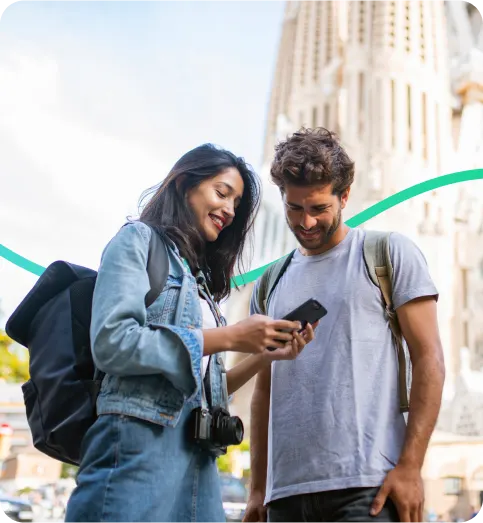Namibia Visa on Arrival (VOA)
From $79.99


Find the right Namibia visa for your trip. Apply online with iVisa and skip the hassle.
How to apply for your Namibia visa on arrival with iVisa
Answer a few simple questions, upload your documents, see when you’ll get your visa, and pay using our secure portal. You can save your progress and come back anytime. Most people finish the application in under 20 minutes.
We’ll guide you through any unclear questions during the application process.
The Namibia visa system is known for being difficult to navigate – your photo must be the right size, and your passport scan must be clear. Even minor typos or formatting issues can delay your entry.
Don’t worry – we review your whole application to catch anything that might cause delays. One of our experts checks everything for errors or missing information to make sure it’s ready to go. This review is quick but thorough.
We’re not the government, but we submit your application to them and are here for you along the way if there are any problems.
We’ll email your approved visa on arrival.

The Namibia Visa on Arrival (VOA) is designed for travelers visiting Namibia for tourism or short business trips.
With this visa, you can:
The VOA does not allow you to work, study, or take up long-term residence. For employment, study programs, or long stays, you will need to apply for a different visa.
The Namibia VOA is valid for up to 90 days per year and grants a single entry into the country.
Purpose: Holiday, visiting friends/family, attending workshops (non-facilitator), meetings, business opportunity exploration, medical treatment, or other non-employment visits
Validity: 1–90 days
Entries: Single
Extension: Possible via Namibian immigration offices
Unfortunately, we don’t currently offer this visa*
Purpose: Attending meetings, conferences, events, incentives, and exhibitions
Validity: 1–90 days
Entries: Single
Extension: Possible via Namibian immigration offices
Unfortunately, we don’t currently offer this visa*
Purpose: Full-time academic studies at recognized Namibian institutions
Validity: Covers duration of the academic program
Entries: Multiple
Extension: Renewable annually
Unfortunately, we don’t currently offer this visa*
Purpose: Temporary work assignments (up to 6 months)
Validity: Up to 6 months
Entries: Multiple (as needed for job duties)
Extension: Renewable depending on contract/work duration
*We currently don’t offer Namibia Short‑term employment permits.
Purpose: Long-term employment in Namibia
Validity: 1–90 days initially (with permit endorsement upon approval)
Entries: Multiple (as needed for job duties)
Extension: Renewable annually
*We currently don’t offer Namibia Work/employment visa.
Citizens of visa-exempt countries, including South Africa, Botswana, Angola, Zambia, Zimbabwe, and a few others, do not need a visa for short visits to Namibia, typically up to 90 days within a calendar year for tourism or family visits.
For eligible nationalities, Namibia offers a visa on arrival (VOA) system at Hosea Kutako International Airport (Windhoek), Walvis Bay Airport, and select land borders, allowing travelers to obtain a visa upon arrival by presenting a valid passport and a passport photo. This visa generally allows a stay of up to 90 days per year, depending on the discretion of immigration officers.
For longer stays and specialized purposes, Namibia uses an embassy-based application system. Travelers seeking to work, study, invest, or join family members in Namibia need to apply for the appropriate visa or permit before traveling. These include work permits, student visas, business visas for extended stays, and other long-term residency options. Applications typically require sponsorship, proof of sufficient funds, medical clearance, and supporting documentation specific to the visa type.
Overstaying is treated seriously in Namibia. Travelers who overstay their permitted period may face fines, detention, or deportation, and may encounter difficulties returning in the future. Extensions should be requested through the Namibian Ministry of Home Affairs and Immigration before the authorized stay expires.
We recommend checking the Ministry of Home Affairs and Immigration website or contacting your nearest Namibian embassy or consulate before traveling to confirm eligibility and the latest requirements for your nationality and travel purpose.
Applying for a visa on your own can be confusing and time-consuming. iVisa simplifies the process, reduces errors, and gives you peace of mind

